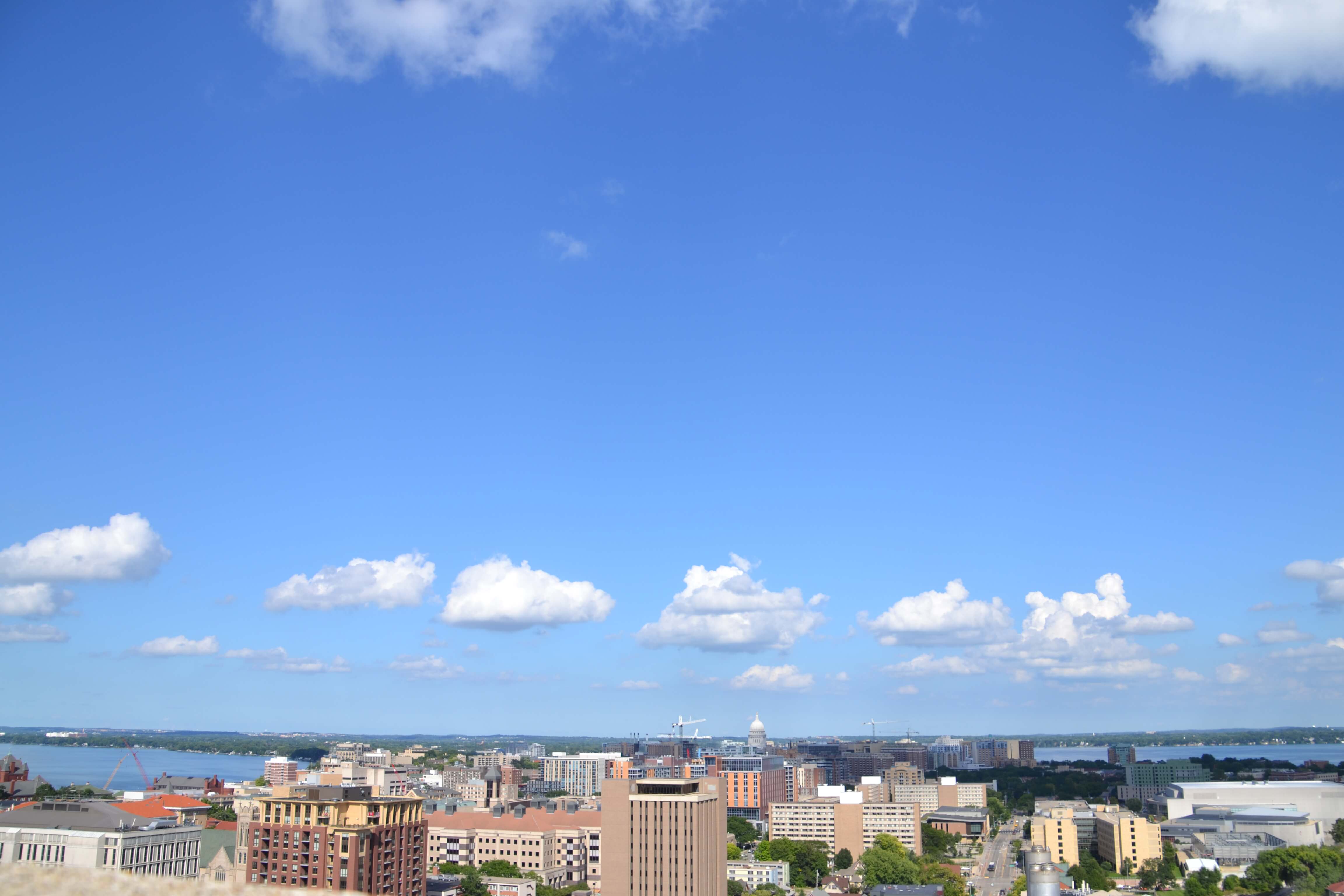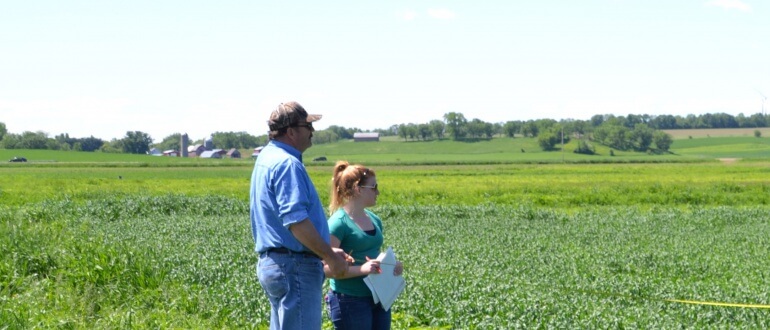If you’ve seen swathes of grass on farmland, you may be familiar with the concept of conservation buffers. These strips of vegetation slow runoff and separate farm fields from waterways, helping to keep our streams and lakes healthy. Yet with increasing urbanization and growing farms, land in our watershed is at a premium. One option, harvestable buffers, is offering many farmers in Dane County a way to reduce phosphorus runoff while keeping valuable acres in production.
Like traditional buffers, harvestable buffers consist of a perennial grass cover. Because the grass will continue to grow after being cut, farmers can harvest hay or grass for dairy feed several times a year.
Delayed mowing
For harvestable buffers, the first mow of the season is often delayed to avoid soil compaction and protect birds during nesting season.
For Jeff Endres, chair of Yahara Pride Farms, producing this feed and “being able to get back some revenue on the land” are key benefits for his operation, Endres Berryridge Farms. In Jeff’s experience, with cost-share, the revenue for harvestable buffers can be comparable to that of row crops (i.e. corn and soybeans).
Harvestable buffers also allow Jeff to manage ditch banks for weeds and tree growth during the growing season, which wouldn’t be accessible with row crops. “If you have noxious weeds and tree growth [on ditch banks], grass underneath dies and creates erosion. With harvestable buffers, grass remains healthy.”
As part of the Dane County Land and Water Resources Department’s new Harvestable Buffer Program, participating farmers have the option of installing a buffer or a field border strip to cool-season or native prairie grass mix, contracted for five, ten or fifteen years.
This program builds on ongoing County work with vegetative buffers. In 2015, the department cost-shared approximately 6 miles of buffers on land that drains to Lake Kegonsa and 5 additional miles on land that drains to the Yahara River below Lake Kegonsa.
For 2016, the Dane County Land and Water Resources Department will continue to focus on the Door Creek watershed, the main tributary to Lake Kegonsa, working with landowners and producers interested in harvestable buffers and other conservation practices such as grassed waterways. According to county conservationist Amy Callis, “Harvestable buffers continue to be a popular conservation practice.”
Conservation practices on farmland, including strategies like harvestable buffers, are an important way our community is working towards our phosphorus reduction goals. We’re looking forward to what 2016 and beyond will bring.
Sources:
Conservation Buffers Fact Sheet. U.S. Department of Agriculture NRCS Conservation Reserve Program, February 2013. prod.nrcs.usda.gov
Vegetated Buffer Strips Fact Sheet. Dane County, 2007. danewaters.com



